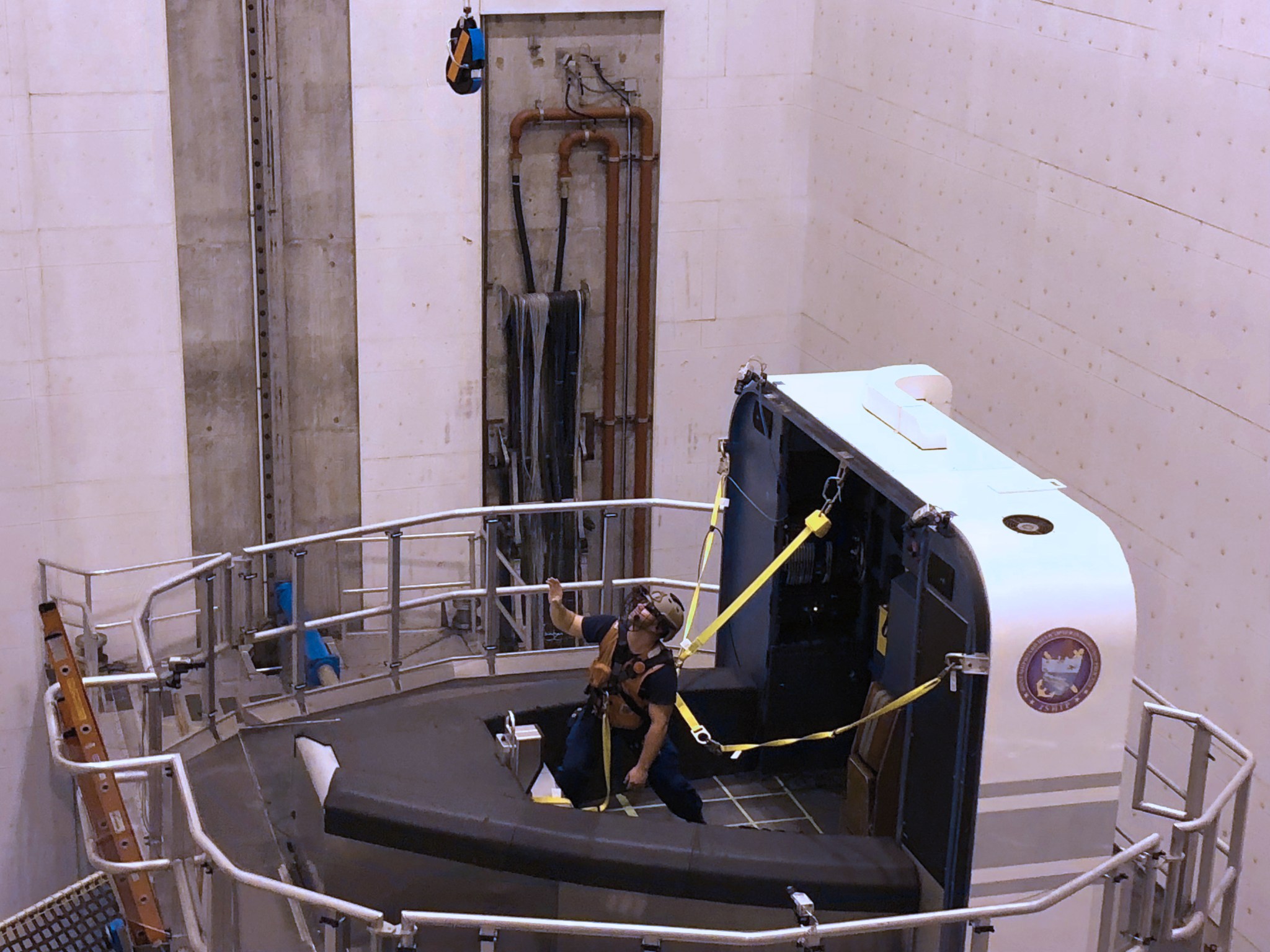The United States Coast Guard (USCG), in collaboration with NASA SimLabs, is using the large-displacement Vertical Motion Simulator (VMS) to conduct a set of studies to better understand the limits of human performance for boat recovery. Results of this experiment promise to shape USCG large and small boat acquisitions, as well as procedures, training, and technology development for USCG rescue operations.
The USCG routinely operates large parent boats and small boats in inclement weather during rescue operations. These operations require the parent boat to launch and recover a small boat using a specialized lift system. Specifically, to successfully recover the small boat, USCG small boat operators must navigate alongside the parent boat, manually receive and control two 24-pound hooks lowered from the parent boat, and attach the hooks to lifting rings with precise timing in pitching and rolling seas. This critical task is performed while operators maintain balance in waves of 10 feet or more without tethers or other assistance. Determining a safe operating envelope for this recovery task has proven challenging. Reliable tools are available to predict boat behavior during the launch and recover process, but avenues for predicting corresponding human performance during the task have been limited.
A VMS cab, typically used for flight simulation, has been modified to simulate the bow of a USCG Over-the-Horizon-IV (OTH-IV) small boat with a lifting-eye and hook (see Figure 1). The VMS motion system simulates three specific sea states with varying wave height and modal period. This provides a controlled environment for the USCG to investigate the operational suitability for the boat crew-member to connect the hook to the boat’s lift-eye during the OTH-IV’s recovery missions under given sea states. (POC: Duc Tran)



























